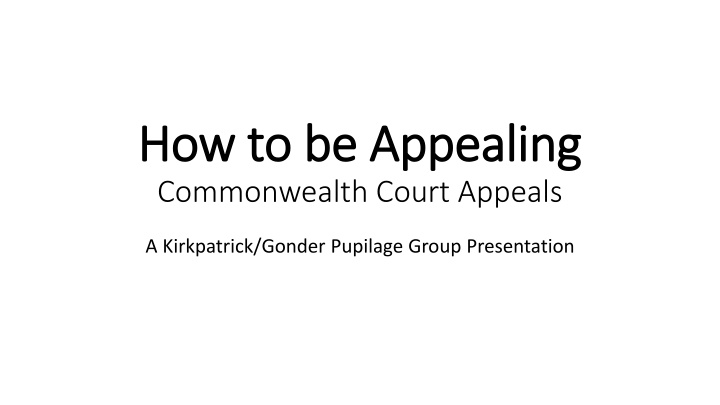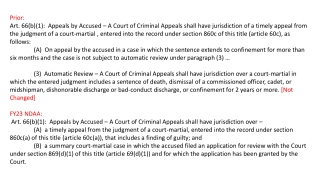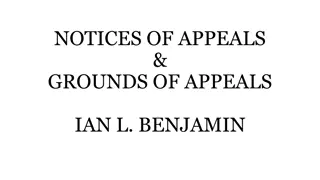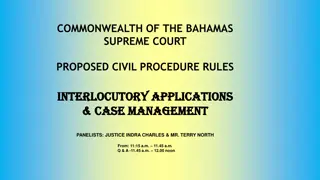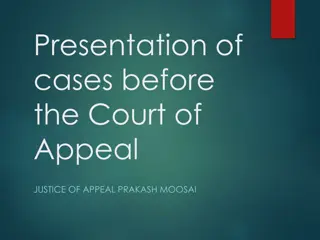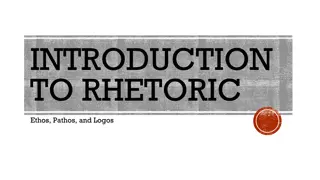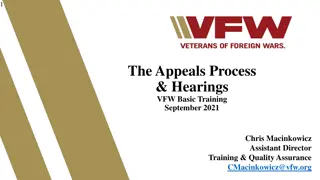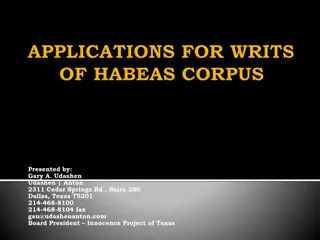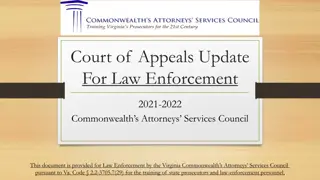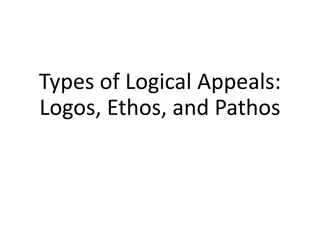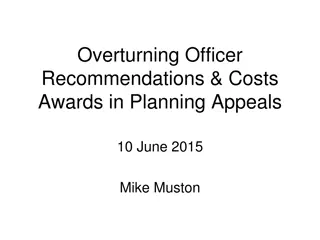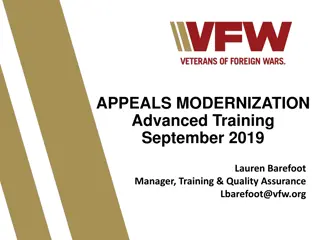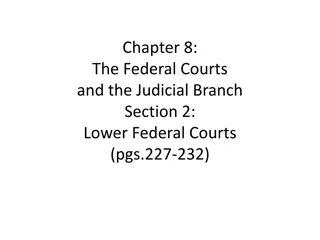Strategies for Effective Commonwealth Court Appeals Presentation
Understand the essentials of creating an appealing and persuasive Commonwealth Court Appeals presentation. Learn how to know your audience, approach brief writing dos and don'ts, and focus on typography guidelines to enhance the impact of your legal arguments. Stay mindful of crucial factors like readability, credibility, and organization as you navigate the nuances of appellate practice.
Download Presentation

Please find below an Image/Link to download the presentation.
The content on the website is provided AS IS for your information and personal use only. It may not be sold, licensed, or shared on other websites without obtaining consent from the author.If you encounter any issues during the download, it is possible that the publisher has removed the file from their server.
You are allowed to download the files provided on this website for personal or commercial use, subject to the condition that they are used lawfully. All files are the property of their respective owners.
The content on the website is provided AS IS for your information and personal use only. It may not be sold, licensed, or shared on other websites without obtaining consent from the author.
E N D
Presentation Transcript
How to be Appealing How to be Appealing Commonwealth Court Appeals A Kirkpatrick/Gonder Pupilage Group Presentation
I. Know Your Audience: I. Know Your Audience: The Judge & The Law Clerk The Judge & The Law Clerk The Judge: oBusy, busy, busy oExperienced The Law Clerk: oGrunt Work oFirst year law clerk vs. seasoned career clerk
Know Your Audience: Know Your Audience: What s at stake with your reader? What s at stake with your reader? Your client s fate Your credibility/reputation before the Commonwealth Court
Brief Writing: Dos & Donts Brief Writing: Dos & Don ts Dos: oDo be clear and concise oDo use headings oDo tell clerks where things are in the record oDo check your attitude at the door before submitting a brief oDo proofread, proofread, proofread oDo follow the Pennsylvania Rules of Appellate Procedure
Brief Writing: Dos & Donts Brief Writing: Dos & Don ts Don ts: oDon tmisrepresent legal authority, exaggerate facts, misquote something, fail to include pincites, or mischaracterize parts of the record oDon t make unsupported arguments oDon tattack opposing counsel oDon tforget about the weaknesses in your case oDon t forget to proofread your work!
Going Forward Going Forward As you listen to this presentation, keep the following in mind: oAccuracy oEasy to read oImportant Issues oOrganization oUnderstandable
II. Typography II. Typography Pa.R.A.P. 124 o The 2013 amendment increased the minimum text font size from 12 point to 14 point and added a minimum footnote font size of 12 point. This rule requires a clear and legible font. The Supreme, Superior, and Commonwealth Courts use Arial, Verdana, and Times New Roman, respectively, for their opinions. The brief using one of these fonts will be satisfactory.
Why Typography Matters Why Typography Matters Good lawyering requires good writing Good typography is an opportunity to improve writing Conserves reader attention
Table of Contents Typography Table of Contents Typography
Other Typography Tips Other Typography Tips AVOID ALL CAPS Avoid excessive use of acronyms Pa.R.A.P. 2111 requires distinctive typeface for headings Use of default or goofy fonts Typewriter habits Use of two spaces between sentences Underlining
Section III. Know Road Signs Section III. Know Road Signs Pa.R.A.P. 2111 & 2174
Contents of the Brief Contents of the Brief Pa.R.A.P. 2111 o Provides specific guidance on the contents and order of a brief o Governs appellants briefs, but each element should be addressed by appellees
Table of Contents, specifically Table of Contents, specifically Pa.R.A.P. 2174 Practice tip: Update your Table of Contents and the Table of Authorities automatically using Microsoft Word One late edit to an early portion of your brief can cause many errors in your tables
Citations, specifically Citations, specifically Pa.R.A.P. 126 Courts in PA do not require Bluebook citations, but be consistent
Issue: Sticking to the Issue Issue: Sticking to the Issue You need to know the proper Scope and Standard of Review and remember that when drafting the issue.
Issue: Framing the Issue Issue: Framing the Issue Pa. R.A.P. 2116 Distinct Question Answer
Proofreading and Random Thoughts Proofreading and Random Thoughts Be mindful of your audience Proper use of apostrophes: Appellants is plural; Appellant s is possessive Remove or resolve all tracked changes
Proofreading and Random Thoughts Proofreading and Random Thoughts Entities like boards are referred to in the third person singular: A board issues its decision, not their decision Also keep this in mind for subject-verb agreement: The board is five members, not are five members
Proofreading and Random Thoughts Proofreading and Random Thoughts Only cite to material that is actually relevant and in the record potential to be stricken. Potentially confuses your brief Be mindful concerning acronyms
Proofreading and Random Thoughts Proofreading and Random Thoughts Be professional and ethical Vigorously attack your opponent s argument, not your opponent Pick up a grammar guide: Gregg s Reference Manual, The Grammar Desk Reference, etc.
IV. Argument Section IV. Argument Section Basics of an Argument: What To Do (Insider Tips): o Be concise and accurate o Clearly lay out your argument o Reference the record o Expose the weaknesses o Tell the Court what you want
What Not to Do (Insider Tips) What Not to Do (Insider Tips) Misstate the law Attack the other parties or the courts Make conclusory statements Include the kitchen sink Avoid long quotes
V. Miscellaneous Items V. Miscellaneous Items Certifications Public Access Policy Proposed Amendments to Pennsylvania Rules of Appellate Procedure
